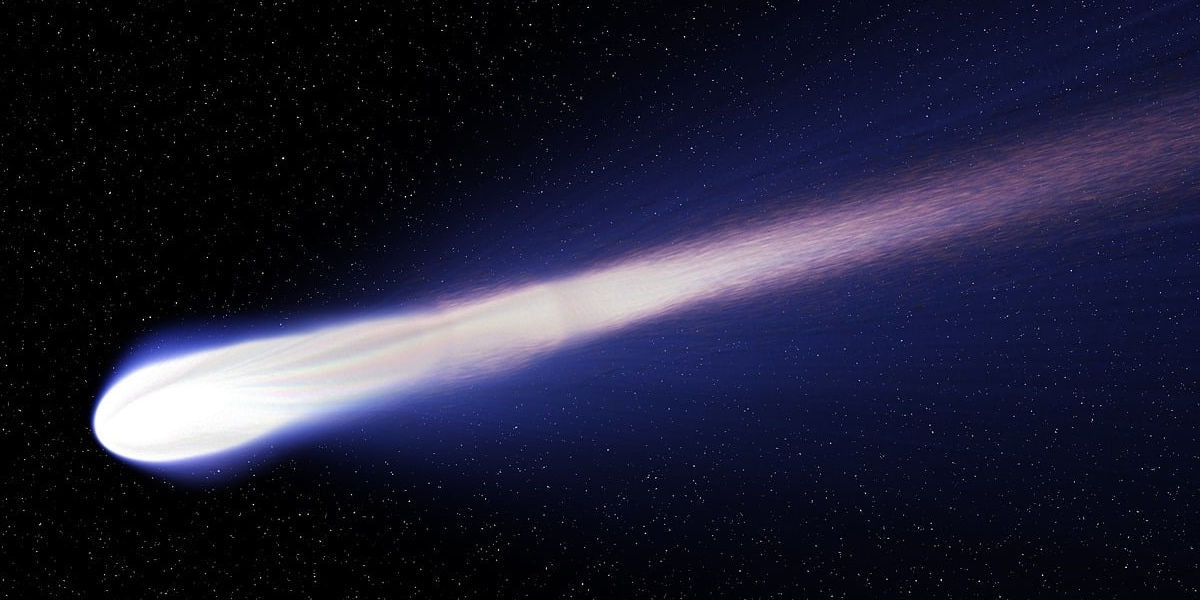Ever since ancient times, the enigmatic series of comets passing through our cosmos have invited mankind's profound admiration and curiosity. Comets - known as the timeless voyagers of our galaxy have not only been a significant component of our history, but they might even be responsible for Earth's very existence. This article will ignite a galactic journey, analyzing Comets and Their Compositions, Comet Tails and Orbits and answering a query, captivating but far-fetched: Could Comets Bring Life to Earth?
Comets and Their Compositions: The Building Blocks of Life?
Stepping into the cosmic realm, comets are icy celestial bodies comprising a nucleus of rock, dust, and frozen gases. This composition, predominantly formed by debris from the solar system's birth, paints the comet as an ancient spacecraft ferrying vital information about our universe's infancy.
Yet, the mystery intensifies as we dive deeper into the molecular makeup of these icy travelers. In addition to common gases like carbon dioxide, nitrogen, and methane, scientists have identified complex organic compounds – even crucial amino acids, which are the building blocks of life.
These discoveries galvanized the exploration into whether comets could potentially harbor life or have played a pivotal role in seeding life on planets, particularly Earth. The origins of our planet's water - and life as we know it, could potentially be traced back to a series of impactful comet events. But to understand the likelihood of this theory, we need to delve into the movement and structure of comets.
Comet Tails and Orbits: Navigating Through Space
Visualizing a comet, one often pictures a dazzling icy body trailed by a glowing tail racing through our night sky. This iconic tail, a distinct feature of comets, is a direct consequence of their journey close to the sun. As a comet approaches the sun, the solar radiation acting on its nucleus causes the ices to sublimate, releasing a glowing jet of gases and dust that form the tail.
Comet tails are intricate mosaics, usually forming two distinct types - dust and ion tails. While dust tails give off a diffused yellow glow due to reflecting sunlight, ion tails, comprised of ionized gases, emit a bluish hue propelled by solar winds, always pointing away from the sun.
Then there’s the comet's orbit, dictated by a combination of their momentum, the giant gravitational pull of the sun, and the gravitational influences of planets they pass by. These orbits can take varying shapes, from prominent parabolic trajectories to elongated ellipses, which often intersect the pathways of the planets. This indeed gives rise to possibilities, albeit slim, of planet-comet collisions and the ensuing spread of comet material on terrestrial surfaces, making the notion 'Could Comets Bring Life to Earth' not as far-fetched as it first appears to be.
Since their first observation, comets have been a source of intrigue, bewilderment, and dread for humankind. However, as our understanding evolved, we began to recognize the significant role these "icy travelers" play in the formation and sustenance of life on Earth. Such understanding further reinforces the necessity of exploring these cosmic visitors.
The Cometary Composition
The nucleus of any comet principally comprises dust and ices, primarily water ice, hence the moniker 'icy traveler'. But aside from water, comets are also a rich source of various volatile compounds like methane, ammonia, and carbon dioxide that may have been critical for the emergence of life.
Studies indicate that comets also hold complex organic compounds, including amino acids - the building blocks of life. The discovery of the amino acid glycine within the comet Lovejoy and comet Wild 2, provided compelling evidence to the hypothesis that suggests comets may have delivered the necessary ingredients for life to our planet.
Eyewitnesses to Solar System’s Genesis
Comets are time capsules that hold vital information about the early Solar System's chemical and physical conditions. They formed from the solar nebula - the cloud of gas and dust leftover from the Sun - approximately 4.6 billion years ago. Being in the distant, cold outer parts of the Solar System, they have remained relatively unchanged since their inception. Hence, studying comets gives us a snapshot of the early Solar System, aiding our understanding of it.
Comets and the Birth of Oceans
Our Blue Planet is unique in the Solar System for its abundant surface water, which is critical for life's existence and diversity here. But where did this tremendous amount of water come from? One theory suggests that it was comets that delivered this essential life-bringer.
While Earth was forming, it was too hot for water to condense and form oceans. After the planet cooled down, it was bombarded by a slew of comets and asteroids. Isotope analysis shows that a part of Earth's water has the same isotopic signature as water found in comets, hinting at their potential role in the formation of Earth's oceans.
An Existential Threat?
As much as we credit comets for their role in our existence, it's also important to remember that they bear a potential threat. The impact of a large comet could have catastrophic effects, leading to mass extinctions, like the one that wiped out the dinosaurs. Understanding comets better will thus not just quench our thirst for knowledge but also prove crucial for our survival.
In conclusion, the mysteries that these icy interstellar travelers hold are far from resolved. Every visit of a comet presents a unique opportunity to learn a little more about these celestial marvels and their role in the intricate story of life on Earth.




